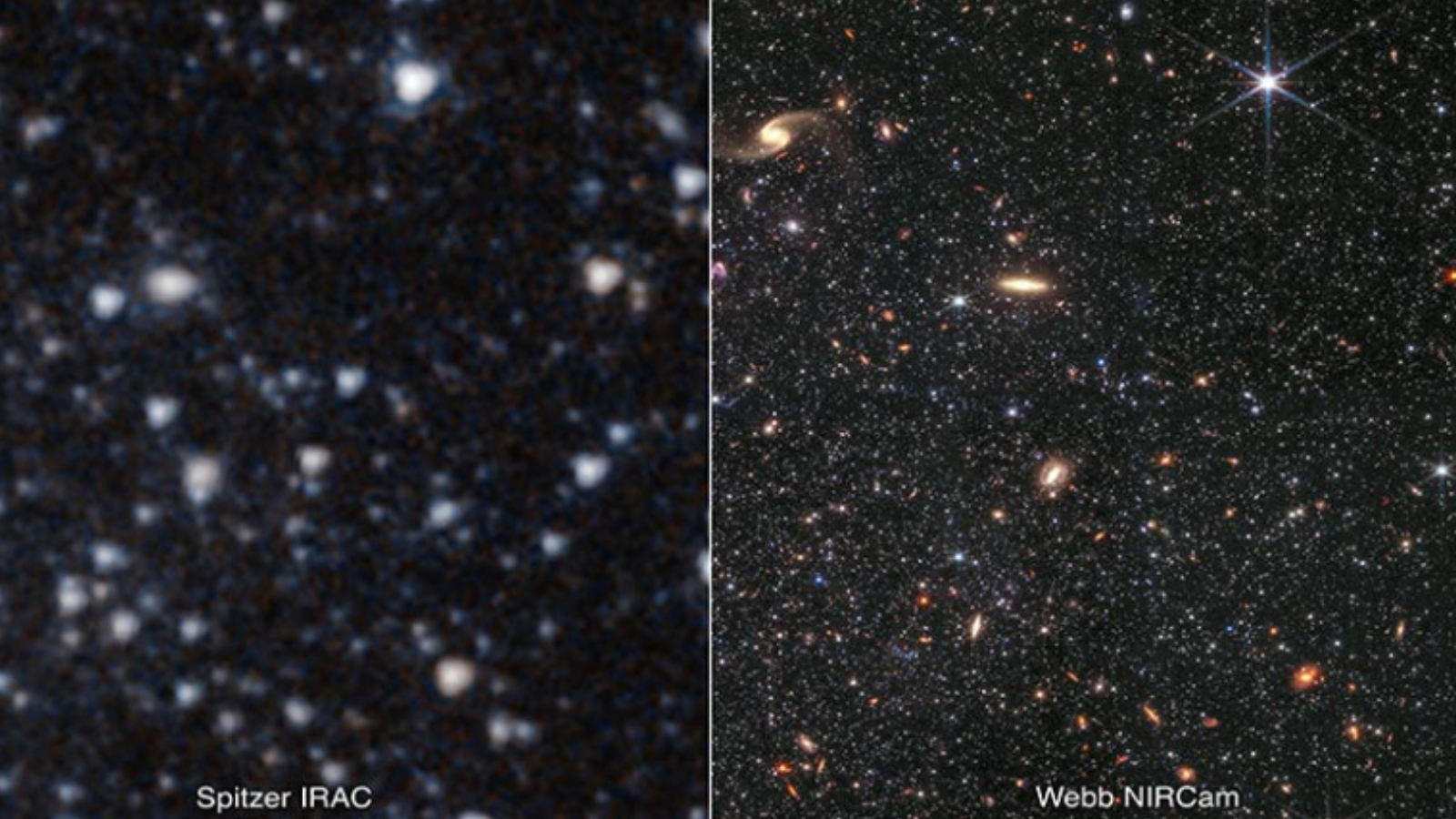
"A long time ago, in a galaxy not so far away..."
Astronomers have used the James Webb Space Telescope (JWST) to map out the history of stars in a low-mass dwarf galaxy that resembles galaxies that filled the early universe. The research could help better understand how star formation rates have changed over the last 13 billion or so years since time began.
The team, led by Rutgers University-New Brunswick astronomer Kristen McQuinn, zoomed in on the galaxy Wolf–Lundmark–Melotte (WLM) with the JWST to obtain the most accurate picture yet of this isolated realm in the cosmos.
A neighbor of the Milky Way, WLM dwells at the edge of our galaxy's local group around 3 million light-years away. It's actively forming stars, and also hosts ancient stars believed to have formed some 13 billion years ago, only around 800 million years after the Big Bang happened.
Because low-mass galaxies like this are thought to have dominated the early universe, they make an excellent proxy for researchers like McQuinn aiming to study early star formation rates.
Related: James Webb Space Telescope makes rare detection of 2 exoplanets orbiting dead stars
"In looking so deeply and seeing so clearly, we've been able to, effectively, go back in time," McQuinn said. “You’re basically going on a kind of archaeological dig to find the very low-mass stars that were formed early in the history of the universe.”
Related: James Webb Space Telescope could target tiny bright galaxies to shine light on dark matter
The observing power of the JWST has finally allowed astronomers to zoom in on these faint galaxies like never before.
Studying small galaxies has big scientific rewards
Low-mass galaxies like WLM are faint and widespread across the sky, comprising the majority of galaxies in the Milky Way's local group. WLM has a privileged position in the dumbbell-shaped local group, however, because existing at the edge of this gathering has kept it isolated and has prevented the gravitational influence of other galaxies from ravaging its stellar population.
This, plus the fact that it is a dynamic, complex system replete with gas and dust, makes WLM a fascinating target for astronomers.
To determine WLM's star formation history and the rate at which stars have been born across different epochs, the JWST zoomed in on patches of sky corresponding with WLM and containing hundreds of thousands of individual stars. The team then measured these stars' colors and brightnesses to determine their ages.
"We can use what we know about stellar evolution and what these colors and brightnesses indicate to age the galaxy’s stars basically," McQuinn said.
She and her colleagues turned to the Amarel high-performance computing cluster, managed by the Rutgers Office of Advanced Research Computing, to possess the JWST's data. This allowed them to count the stars of different ages and thus chart the birth rate of stars over the history of the universe.
"What you end up with is a sense of how old this structure that you’re looking at is," McQuinn said.
The ebb and flow of star birth
The researchers saw that the production of stars ebbed and flowed per the data, with WLM producing the most stars over a period of 3 billion years that started between 2 billion and 4 billion years after the Big Bang.
This star formation was halted before starting up again; McQuinn attributes this pause to conditions specific to the early universe.
"The universe back then was really hot. We think the temperature of the universe ended up heating the gas in this galaxy and kind of turned off star formation for a while," she said. "The cool-down period lasted a few billion years, and then star formation proceeded again."
The new research effectively demonstrates the range of uses astronomers have for the JWST, which launched on Christmas Day 2021 and started sending back data in the summer of 2022.
Additionally, McQuinn thinks the major computation effort from the Amarel high-performance computing cluster, in calibrating and processing JWST data to reach these results, demonstrates several processing procedures that could benefit the wider scientific community.
The team's research is published in the Astrophysical Journal.







